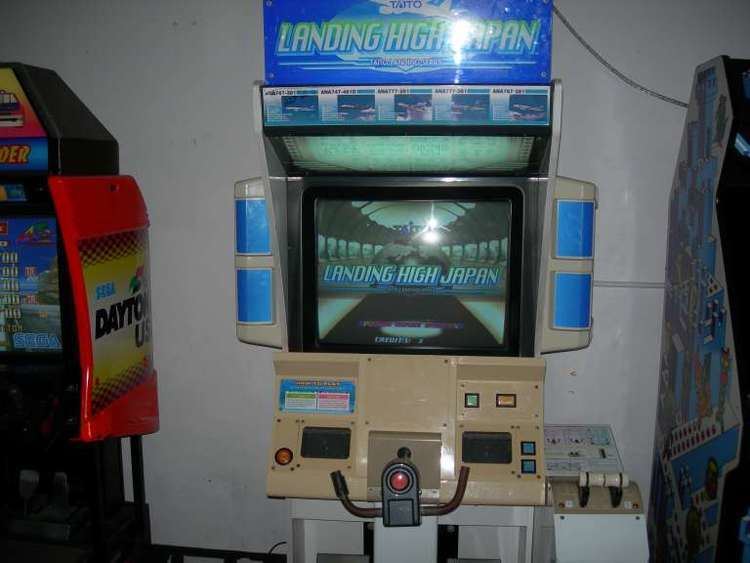9.8 /10 1 Votes
Mode(s) One player Initial release date December 1999 | 4.9/5 Emuparadise Cabinet Seated CPU Power PC603e. Publisher Taito | |||||||||||||||||||||||||||||||||
 | ||||||||||||||||||||||||||||||||||
Display Raster, resolution = VGA Similar Flight simulators, Other games | ||||||||||||||||||||||||||||||||||
Landing high japan by taito
Landing High Japan is an arcade game in which the object is to pilot a commercial airliner, taking off from and landing at several Japanese airports. It is a revival of the "Landing" series of airline simulation arcade games which consist of Midnight Landing (1987), and Top Landing (1988).
Contents
Gameplay

Inclement weather such as clouds, rain, thunderstorms, and snow may be encountered. Time of day is also part of the game (daytime, sunset, and night). Every airport at any time can have no wind, head winds, tail winds, cross winds, and a variety of wind speeds. The flight path and wind patterns become more difficult with each successive landing as players progress.

A landing can end with several different results and consequences, including "Clear," "Bad Landing," "Course Out" "Go-around, " and "Crash.". After each landing, points are granted or deducted based on a piloting evaluation, a course evaluation, and a passenger evaluation. An adequate amount of points must be achieved in order to get a "Clear" result and advance to the next airport. The final score is calculated by adding up totals from each landing and dividing by the number of attempts. Thus, a player seeking to earn listing among the top ten high scores may do so more easily by playing as far as possible on one credit and then ending the game, rather than continuing to use credits in an effort to successfully land at all six airports.

During gameplay, the copilot will occasionally make comments, e.g. "Captain, I think we should lower the flaps," "Captain, we are veering off course!" or "Captain, we are in danger of stalling out!" He also announces when the aircraft reaches V1 speed, V2 speed, and VR speed during takeoff. In addition, he carries out certain orders such as lowering the landing gear (subsequently confirming, "Gear down, three green," a reference to the illumination of the three green Down-Locked indicator lights. The control tower and flight attendant also are briefly heard from at the beginning of the takeoff phase. The ground proximity warning system is often heard saying, "Too low, terrain", "Whoop whoop pull up", and "100, 50, 40, 30, 20, 10" Erratic flying causes the passengers to begin turning from green to purple and then red, indicating that they have become angry, costing the players 2 points.
Settings and options

In beginner mode, the player controls just the flight yoke and rudder pedals. In advanced mode, the player has control over yoke, rudder, throttles, flaps, and a few other settings. There is a small LCD monitor above the yoke that has 4 configuration displays (horizon indicators, engine operation, etc.) Landing High Japan features All Nippon Airways as the airline. The aircraft that the player can choose among are the Boeing 747-481D, Boeing 767–281, Boeing 767–381, Boeing 777–281 and Boeing 777–381. When the plane is about to stall, the game makes a sound simulating a stick shaker but the yoke does not actually shake. There is a view change button to switch from cockpit view to a view from behind the aircraft.

The six airports include Kansai International Airport (Osaka), Hiroshima Airport, Naha Airport, Shin-Chitose (Sapporo), Tokyo International Airport, and Fukuoka Airport. The player takes off once, and thereafter conducts only landings. The player can choose the take-off and landing airport.
A help button may be pressed to engage the autopilot. It automatically places the airplane back on its flight path if players are in difficulty. This can salvage a landing that is about to go awry, but it can only be used a limited number of times.
The game is available in both 29" and 50" versions.
